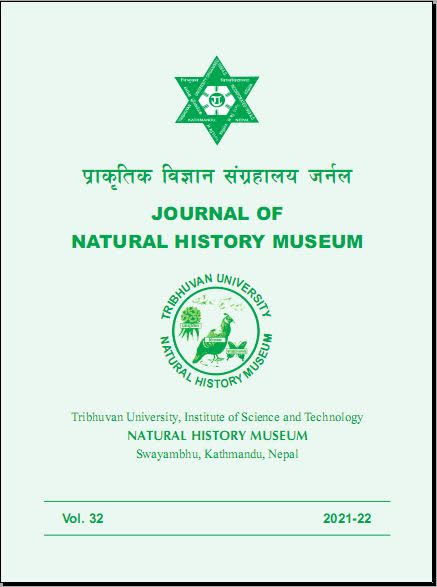Floristic composition of bryophytes in disturbed habitats of two different elevations in Chandragiri Hill, central Nepal
DOI:
https://doi.org/10.3126/jnhm.v32i1.49952Keywords:
disturbance, elevation, hornworts, liverworts, mossesAbstract
Bryophytes are small, photosynthetic plants, capable of growing on variety of habitats, so are pioneer of ecological succession. In Nepal bryophytes have been studied floristically in different parts of the country, but the impact of disturbance on floristic composition was lacking. Therefore, present study aimed to determine floristic composition of bryophytes especially on disturbed habitat generated by recently established Cable Car facility in Chandragiri hill, Kathmandu. The study area, highly disturbed at the base (1550-1600 m asl) and top of the hill (2400-2450 m asl), were selected for the collection of bryophytes. Altogether, 17 species of bryophytes including 5 liverworts, 11 mosses and 1 hornwort were recorded from the disturbed habitats. Among the 5 classes, Bryopsida was the most dominant class followed by the class Marchantiopsida, Polytrichopsida, Jungermanniopsida and Anthocerotopsida. Impact of elevation on diversity of bryophytes was observed in both sites of disturbed habitats. The diversity of bryophyte was found higher (13 species) at the base of the hill as compared to the top (8 species). Among the 17 species of bryophytes, 5 taxa (Aerobryidium filamentosum, Anomobryum auratum, Atrichum undulatum var. subserratum, Chiloscyphus profundus and Plagiomnium ellipticum) that have not been enumerated from the study site so far were also documented.

